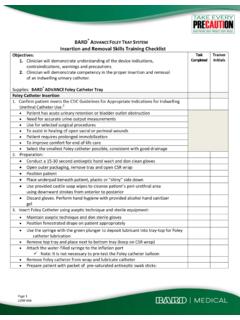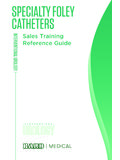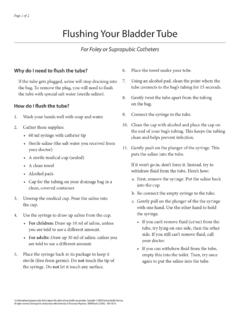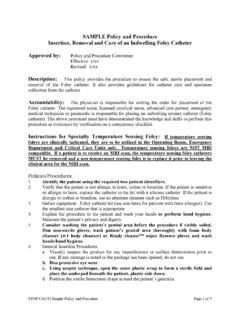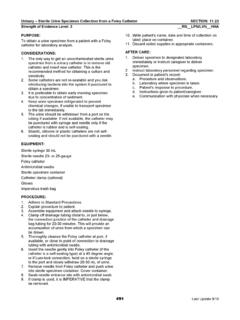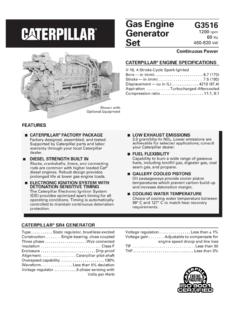Transcription of MERGING vs. JOINING: Comparing the DATA Step …
1 1 Paper 036-2009 MERGING vs. joining : Comparing the data step with SQLM alachy J. foley , Chapel Hill, NCABSTRACT Which merges files better: the SAS data step or SAS SQL? Traditionally, the only way to merge files in SAS was via the SAS data step . Now SAS provides a Structured Query Language (SQL) facility which also merges files. This tutorial compares and contrasts these two merge facilities. It examines the pros and cons of each merge technique. It looks at data step code to perform specific merges and then looks at the corresponding SQL code to perform the same This tutorial is a SQL primer for the SAS user with some experience with SAS data Steps and the MERGE statement, but little or no experience with SQL. It focuses on MERGING or joining two data sets in any combination with either the data step or SQL.
2 Upon completing the paper, the reader should have a good grasp of how SQL compares to DEFAULT MATCH-MERGE There are many definitions for merge. All of them talk about taking two or more sorted input files and combining them into one output file. Of course, sorted means that the input files have a common key and that the records in each file are ordered according to the key field(s). Consider the following two input files, as an example. Exhibit 1: Two Input Files ------------------------------- FILE ONE FILE TWO --------- ------------- ID NAME ID AGE SEX --------- ------------- A01 SUE A01 58 F A02 TOM A02 20 M A05 KAY A04 47 F A10 JIM A10 11 M These two files have a common key field called ID.
3 The records in both files are sorted by ID. A match-merge in SAS means that records from the one file will be matched up with the records of the second file that have the same ID. The information in the matched records is combined to form one output record. Here is how the above two input files are match-merged in SAS. Exhibit 2: Default Match-Merge ------------------------------ data OUT; MERGE ONE TWO; BY ID; RUN; ------------------------------ FILE OUT ------------------- ID NAME AGE SEX ------------------- A01 SUE 58 F A02 TOM 20 M A04 47 F A05 KAY . A10 JIM 11 M2 Note that in this merge every record from both input files exists in the output file. Observe that the records A05 (file ONE) and A04 (file TWO) did not have a matching record, yet their information was included in the merged data POSSIBLE ( data ) SETS Exhibit 2 shows the default match-merge.
4 Now consider the following code which uses the same two input files as above (Exhibit 1), but has seven different output files. Exhibit 3: All Match-Merge Sub-sets ---------------------------------------- --- OPTIONS MERGENOBY=WARN MSLEVEL=I; data ONEs TWOs inBOTH NOmatch1 NOmatch2 allRECS NOmatch; MERGE ONE(IN=In1) TWO(IN=In2); BY ID; IF In1=1 then output ONEs; IF In2=1 then output TWOs; IF (In1=1 and In2=1) then output inBOTH; IF (In1=0 and In2=1) then output NOmatch1; IF (In1=1 and In2=0) then output NOmatch2; IF (In1=1 OR In2=1) then output allRECS; IF (In1+In2)=1 then output NOmatch; RUN; ---------------------------------------- --- FILE ONE FILE TWO --------- ------------- ID NAME ID AGE SEX --------- ------------- A01 SUE A01 58 F A02 TOM A02 20 M A05 KAY A04 47 F A10 JIM A10 11 M (3a) FILE ONEs (In1=1) ------------------------- ID NAME AGE SEX ------------------------- A01 SUE 58 F A02 TOM 20 M A05 KAY.
5 A10 JIM 11 M (3b) FILE TWOs (In2=1) ------------------------- ID NAME AGE SEX ------------------------- A01 SUE 58 F A02 TOM 20 M A04 47 F A10 JIM 11 M (3c) inBOTH(In1=1 & In2=1) ------------------------- ID NAME AGE SEX ------------------------- A01 SUE 58 F A02 TOM 20 M A10 JIM 11 M3 (3d) FILE NOmatch1 (In1=0 and In2=1) ------------------------- ID NAME AGE SEX ------------------------- A04 47 F (3e) FILE NOmatch2 (In1=1 & In2=0) ------------------------- ID NAME AGE SEX ------------------------- A05 KAY.
6 (3f) FILE allRECS (In1=1 OR In2=1) ------------------------- ID NAME AGE SEX ------------------------- A01 SUE 58 F A02 TOM 20 M A04 47 F A05 KAY . A10 JIM 11 M (3g) FILE NOmatch(In1+In2) ------------------------- ID NAME AGE SEX ------------------------- A04 47 F A05 KAY . Exhibit 3 demonstrates that very little data step code can create a lot of files. Surprisingly, each of the seven output files is useful in real-world applications. The output file allRECS (3f in Exhibit 3) is the default match-merge that was obtained in Exhibit 2. It contains all the information from both of the input files.
7 All the other output files are subsets of allRECS. ONEs (3a) is a data set with all the information from file ONE along with any corresponding data from file TWO. Notice that ONEs does not have information on A04 since that ID is not in file ONE. Similarly, the TWOs (3b) data set contains all the data from file TWO with any corresponding data from file ONE. TWOs does not include A05 since that ID does not exist in TWO. NOmatch1 (3d) is a file with data from file TWO that does not match the ID s from data set ONE. The NOmatch1 file contains the information that was not in the input file called ONE. Put another way, file ONEs (3a) and NOmatch1 together contain all the information from both input files. Analogously, NOmatch2 (3e) contains the information not found in file TWOs. inBOTH (3c) contains only ID s which had records in both input files.
8 Observe that inBOTH has neither A04 nor A05 in it. Finally, NOmatch (3g) contains the records not found in inBOTH. In other words, NOmatch and inBOTH together have all the information from both files. Incidentally, NOmatch contains the information from both NOmatch1 and DIAGRAM OF data SETS Another means of examining the match-merge given in Exhibit 3 is through a Venn diagram. Exhibit 4: Venn Diagram of two files. The circle on the left represents data set ONE. The circle on the right represents data set TWO. The contents of the circles are the different values of the ID s (key variables) in each data set. Each ID value falls into one of three areas: A, B, or C. Area A contains the ID values that are unique to file ONE ( values that exist in file ONE but do not exist in file TWO). Area B contains the ID values that exist in both files.
9 Area C contains ID values that exist only in data set TWO. The Venn diagram allows you to see all the possible sets and sub-sets that you can create via a match-merge of two data sets. Namely, Exhibit 5: All possible ( data ) Sets ----------------------------------- SETS FILES (in Exhibit 3) ----------------------------------- A+B+C allRECS A+B ONEs B+C TWOs A+C NOmatch A NOmatch2 B inBOTH C NOmatch1 OTHER CODES TO CREATE MATCH-MERGES The code presented in Exhibit 3 is only one way of MERGING data sets with the IN= options. There are other ways of coding using the IN= option. Below are some examples. Following the examples is a short explanation of the code. Exhibit 6: Creating Complementary Outputs ---------------------------------------- --- data ONEs NOmatch1; MERGE ONE(IN=In1) TWO(IN=In2); BY ID; IF In1=1 then output ONEs; ELSE output NOmatch1; RUN; ---------------------------------------- --- Exhibit 7: Creating Complementary Outputs ---------------------------------------- --- data inBOTH NOmatch;ABC5 MERGE ONE(IN=In1) TWO(IN=In2); BY ID; IF (In1=1 and In2=1) then output inBOTH; ELSE output NOmatch; RUN; PROC PRINT NOOBS data =NOmatch; TITLE Records Which Did Not Match ; RUN; ---------------------------------------- --- Exhibit 8: Alternative Subsetting Methods ---------------------------------------- --- data ONEs inBOTH NOmatch1 allRECS NOmatch; MERGE ONE(IN=In1) TWO(IN=In2).
10 BY ID; IF In1 then output ONEs; IF (In1 and In2) then output inBOTH; ** IF (In1+In2)=2 then output inBOTH; IF (NOT In1 & In2) then output NOmatch1; IF (In1=0 and In2=1) OR (In1=1 and In2=0) then output NOmatch; RUN; ---------------------------------------- --- Exhibits 6 and 7 demonstrate how the IF-THEN-ELSE statement can construct two mutually exclusive data sets. Exhibit 8 illustrates various Boolean operations and alternative logical expressions to create different data sets. It is left to the reader to contrast and compare Exhibits 6-8 with Exhibits 3-5. Exhibit 7 shows how the two complementary output files would typically be used. The inBOTH file is the merge you are trying to create. The NOmatch file is a listing of all the records that did not match. If you were expecting all the input records to match, you can print the NOmatch file as in Exhibit 7 and have a listing of errors.










